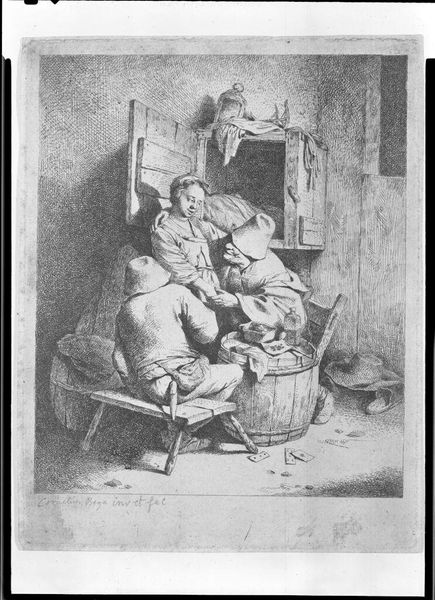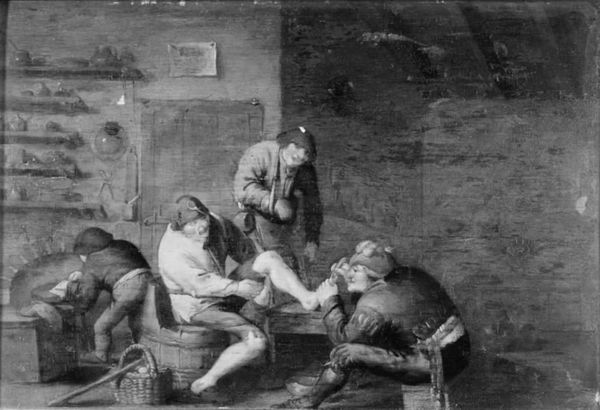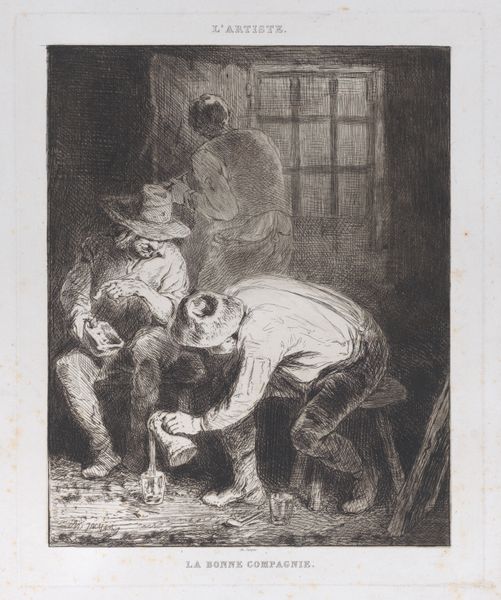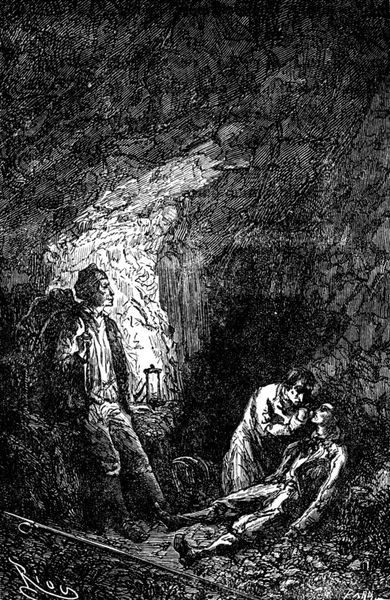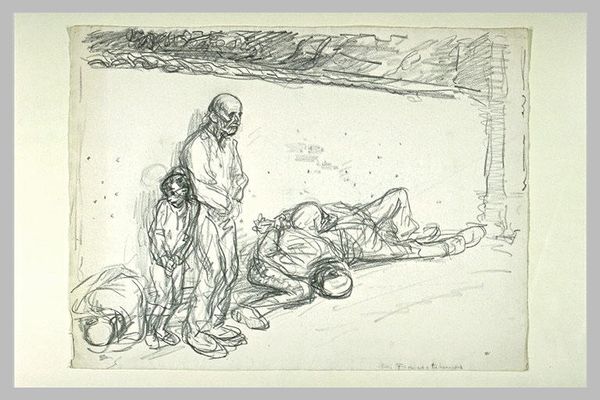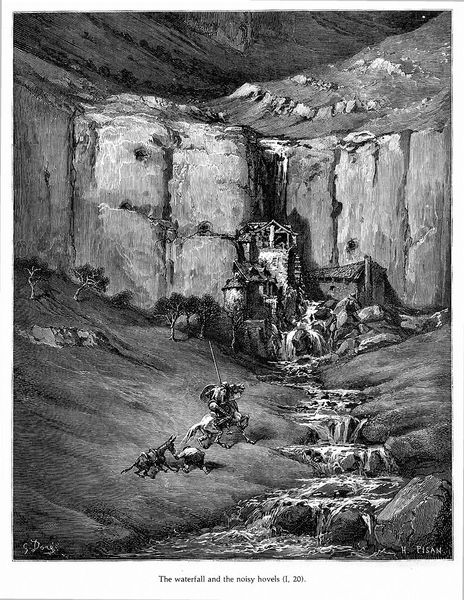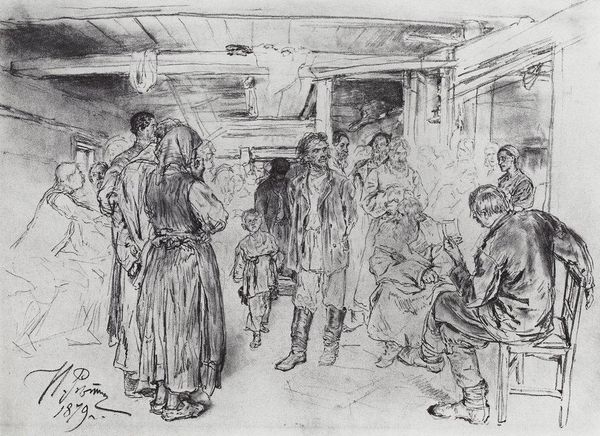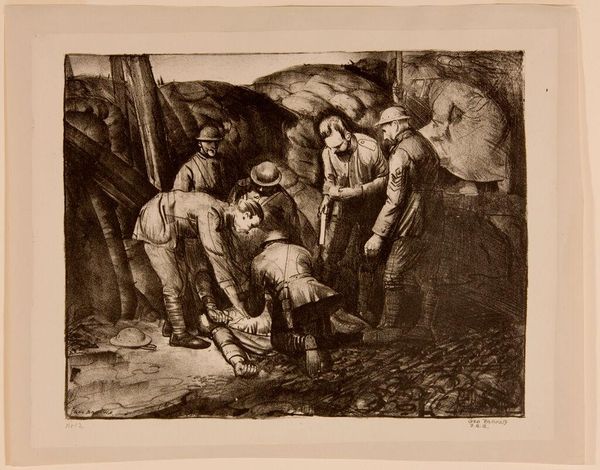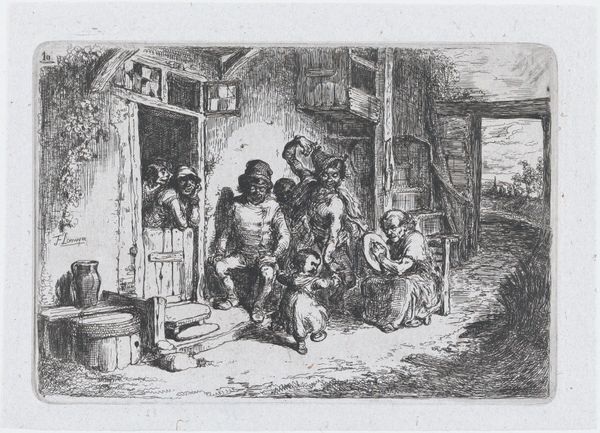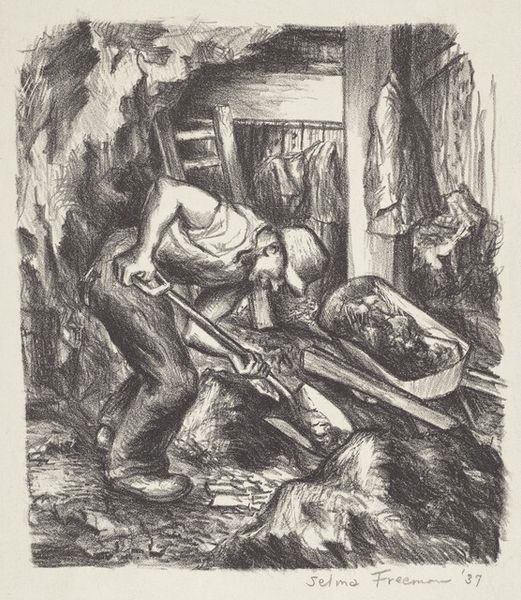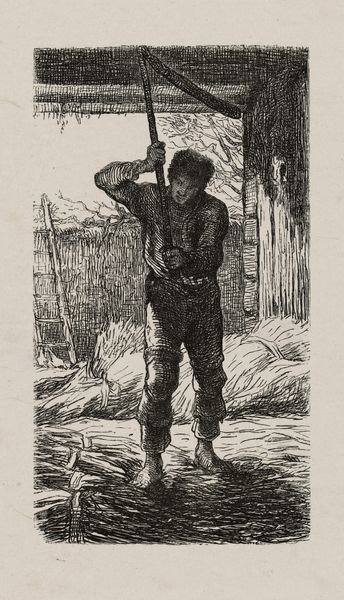
Quince, from "Quince" by Winthrop Mackworth Praed 1888
0:00
0:00
drawing, print, etching, engraving
#
drawing
# print
#
etching
#
landscape
#
horse
#
men
#
genre-painting
#
engraving
Dimensions: sheet: 17 7/8 x 13 1/8 in. (45.4 x 33.3 cm)
Copyright: Public Domain
Editor: So, here we have Edwin Austin Abbey’s etching, "Quince, from \"Quince\" by Winthrop Mackworth Praed," from 1888, at the Met. It feels almost like a snapshot, capturing this everyday scene in the barn. What strikes you about this piece? Curator: The barn itself acts as a sort of reliquary, doesn't it? Look at how the horse peers out, almost like a sacred icon in its stall. And consider the men; their postures speak volumes about their relationship to the animal and the cyclical nature of their work. Notice, too, the lantern, a potent symbol of hidden knowledge, perhaps reflecting the intimate relationship between man and beast in this confined space. Editor: I didn't think of it that way at all. It seemed very grounded, practical. Curator: But isn't the mundane often imbued with deeper meaning? The act of tending to the horse can be interpreted as a ritual, reinforcing community memory of a specific rural culture. And what does the etching process itself contribute? The act of creating it – those incised lines – mimics the slow accumulation of history and labor in this space, don’t you think? What feelings do those marks stir in you? Editor: Now that you point it out, I can see the ritual aspect. It does make it more powerful. The etching's rough lines also do evoke a certain timelessness...it's as if it captures the past, yet feels relevant now. Curator: Precisely! Abbey seems to grasp how these images imprint themselves upon our collective consciousness. I will keep this work in my mind, when in barns later! Editor: Definitely! I will, too. This discussion has broadened my understanding, thank you.
Comments
No comments
Be the first to comment and join the conversation on the ultimate creative platform.
